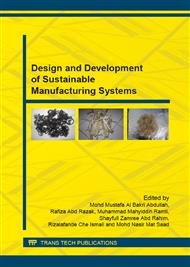[1]
W. Haensch, et al., Silicon CMOS devices beyond scaling, IBM J. Res. Dev., vol. 50, pp.339-361, (2006).
Google Scholar
[2]
K. Dae-Hyun and J. A. del Alamo, 30-nm InAs Pseudomorphic HEMTs on an InP Substrate With a Current-Gain Cutoff Frequency of 628 GHz, Electron Device Letters, IEEE, vol. 29, pp.830-833, (2008).
DOI: 10.1109/led.2008.2000794
Google Scholar
[3]
H. Zirath, et al., InP HEMTs and HBVs for Low Noise and Ultra-High Speed: Device and Circuit Research at Chalmers University of Technology., presented at the Gallium Arsenide applications symposium. GaAs 2003, Munich, (2003).
Google Scholar
[4]
R. Grundbacher, et al., High performance millimeter wave 0. 1um InP HEMT MMIC LNAs fabricated on 100 mm wafers, in Indium Phosphide and Related Materials, 2004. 16th IPRM. 2004 International Conference on, 2004, pp.284-287.
DOI: 10.1109/iciprm.2004.1442710
Google Scholar
[5]
M. Mohamad Isa, M. Missous, Y. Lai, J. Sexton, and S. Boulay, Fabrication of Low Noise InAlAs-InGaAs pHEMT for SKA application (300MHz to 2GHz), in UK Semiconductor 2011 Conference, The University of Sheffield, 6-7 July (2011).
DOI: 10.1109/asdam.2008.4743363
Google Scholar
[6]
W. R. Curtice, A MESFET Model for Use in the Design of GaAs Integrated Circuits, Microwave Theory and Techniques, IEEE Transactions on, vol. 28, pp.448-456, (1980).
DOI: 10.1109/tmtt.1980.1130099
Google Scholar
[7]
H. Statz, et al., GaAs FET device and circuit simulation in SPICE, Electron Devices, IEEE Transactions on, vol. 34, pp.160-169, (1987).
DOI: 10.1109/t-ed.1987.22902
Google Scholar
[8]
A. J. McCamant, et al., An improved GaAs MESFET model for SPICE, Microwave Theory and Techniques, IEEE Transactions on, vol. 38, pp.822-824, (1990).
DOI: 10.1109/22.130988
Google Scholar
[9]
E. Arnold, et al., Direct extraction of GaAs MESFET intrinsic element and parasitic inductance values, in Microwave Symposium Digest, 1990., IEEE MTT-S International, 1990, pp.359-362 vol. 1.
DOI: 10.1109/mwsym.1990.99594
Google Scholar
[10]
G. Dambrine, et al., A new method for determining the FET small-signal equivalent circuit, Microwave Theory and Techniques, IEEE Transactions on, vol. 36, pp.1151-1159, (1988).
DOI: 10.1109/22.3650
Google Scholar
[11]
M. Y. Jeon and Y. H. Jeong, An approach to extract extrinsic parameters of HEMTs, IEICE Transactions on Electronics, vol. E83-C, pp.1930-1935, (2000).
Google Scholar
[12]
K. Shirakawa, Approach to determining an equivalent circuit for HEMT's, IEEE Transactions on Microwave Theory and Techniques, vol. 43, pp.499-503, (1995).
DOI: 10.1109/22.372092
Google Scholar


